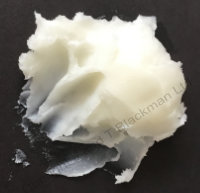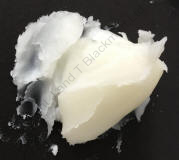 |
Cold Wax Painting Medium |
|
 |
Cold Wax Painting Medium |
|
Surfaces for Cold Wax Painting
How to choose a surface for use with Cold Wax.
 Zest-it Cold Wax Painting Medium
|
Surfaces for Cold Wax Painting
There's debate about the type of surface when using Cold Wax Painting Medium. Reading the works of the late 18 early 1900's on the subject of wax and oil paint techniques, also, from the research and experiments I have done, nothing suggests or indicates that works using wax medium and oil paint need restricting to a rigid surface. Paper has always been a good surface for Wax, prints are made on paper using oil based inks, encaustic painting is often on paper, many works in museums indicate that it is archival. Heavyweight paper has always been good, have a look at these images. One thing has become apparent however, the modern acrylic primed canvas, with its plastic feel, little absorbency and a 'thin' weave, are an unsuitable surface for a wax/oil painting to live a good life! Choose a particular surface according to your working methods or the effect required. |
|
Testing surface finishes We tested numerous types of gesso, chalk paint, gel's, paste's, casein, milk paint and many others, to establish if the Cold Wax worked and lived a good life with these different finishes. Very necessary if people intend making their own surface to work on. Like Cold Wax with a good brand name, branded surface finishes can usually be relied upon, as they have been tested for suitability as a surface ground for oil and wax painting. If you are new to Cold Wax or feel unsure of how to choose a surface. Apply some Cold Wax to cardboard and note how it feels, then do the same with a wall tile, doing this will give you an insight into which you prefer - a hard surface or a softer one.
|
Waxes tested on different surfaces, both paper and canvas. |
|
|
'Birch Ply' as a surface Birch Plywood is a rigid support excellent for painting onto, it needs no priming for the wax/oil mixture to live well. Birch is a stable, quality ground for use with wax medium and oil paint, especially, if numerous layers will be built-up for the work. Purchase from your local DIY store, they will usually cut the sheet of Birch Ply to size, or, try online for a large selection. The same can be said for MDF |
| Paper as a surface for Zest-it Cold Wax Painting Medium Testing papers that are recommended to be used for painting with oil paint, most paper surfaces worked very well and without 'bleed through'. Painting with wax and oil on paper can be a rewarding experience, it is responsive and the wax/oil live well on it. |
|
|
|
Ready made Boards Clay, Gesso and Encaustic boards are common in the USA and often used by painters of Cold Wax, because, their surface is designed for wax, both hot or cold! Online you can obtain Linen, Canvas and Clay boards in the UK ( ArtDiscount) or you can make your own primed with a suitable Gesso. |
|
Raw Canvas The image left is of medium weight Belgium Linen, from Russell and Chapple, which I hand-stretched onto 20" x 16" stretcher bars, it shows the coats of primer. The job of the 'primer' is to protect the canvas and give a suitable surface for the wax/oil mixture. It is a flexible finish with the degree of absorbency necessary for the wax and oil to adhere well.
|
|
|
|
Raw canvas waxed The raw canvas can be primed with the Zest-it Cold Wax Painting Medium, this protects the canvas/linen (think Barbour Wax Jacket!). Waxing a stretched raw linen or canvas is an ideal surface to paint wax on. The surface is protected from any oil paint, the finish is compatible with the media to be used, its a neutral colour and archival. Use a stiff bristle brush to apply the Cold Wax. If you see this information anywhere else, then you know it has been plagiarised. |
| Making your own painting surface. Fabric, like the canvas and linen shown right, make excellent painting grounds, either mounted on birch ply/mdf/board or on stretcher bars. Hessian and Cotton fabrics can be found online, the Linens are from Russell and Chappell. Their shop has a vast array of different types and weights, including, 'off-cuts' which are useful for trying different surfaces. We also have some in the Zest-it.shop As mentioned before the ready-made canvas can cause problems for Cold Wax and Oil Painting. The acrylic primer used on their weave gives such a 'plastic' surface, consequently, the oil/wax cannot live a good life because the surface is not absorbent enough! Copyright © Jacqui Blackman 2012
|
|
Copyright 2001 - 2025 © Jacqui Blackman. All Rights Reserved
Worldwide.
The information contained herein is the Intellectual Property of
Jacqui Blackman and
J. & T. Blackman Ltd., and is supplied without liability for
errors or omissions.
Zest-it ® and its ![]() logo are Registered Trademarks.
logo are Registered Trademarks.
No part may be reproduced or used except as authorized by
contract or other written permission, unless stated otherwise.
The copyright and the foregoing restriction on reproduction and
use extend to all media in which the information may be embodied.